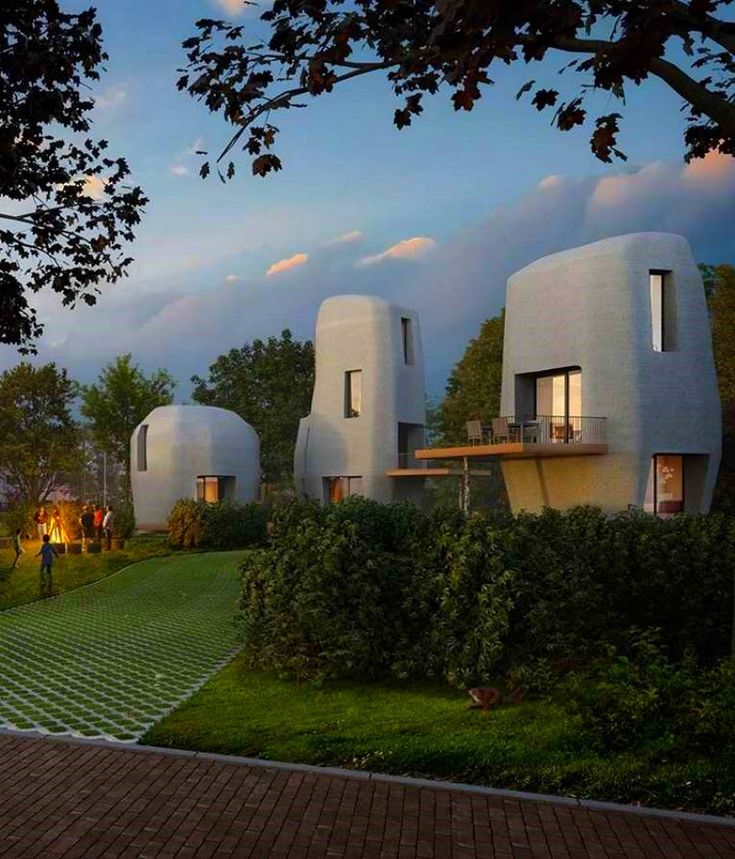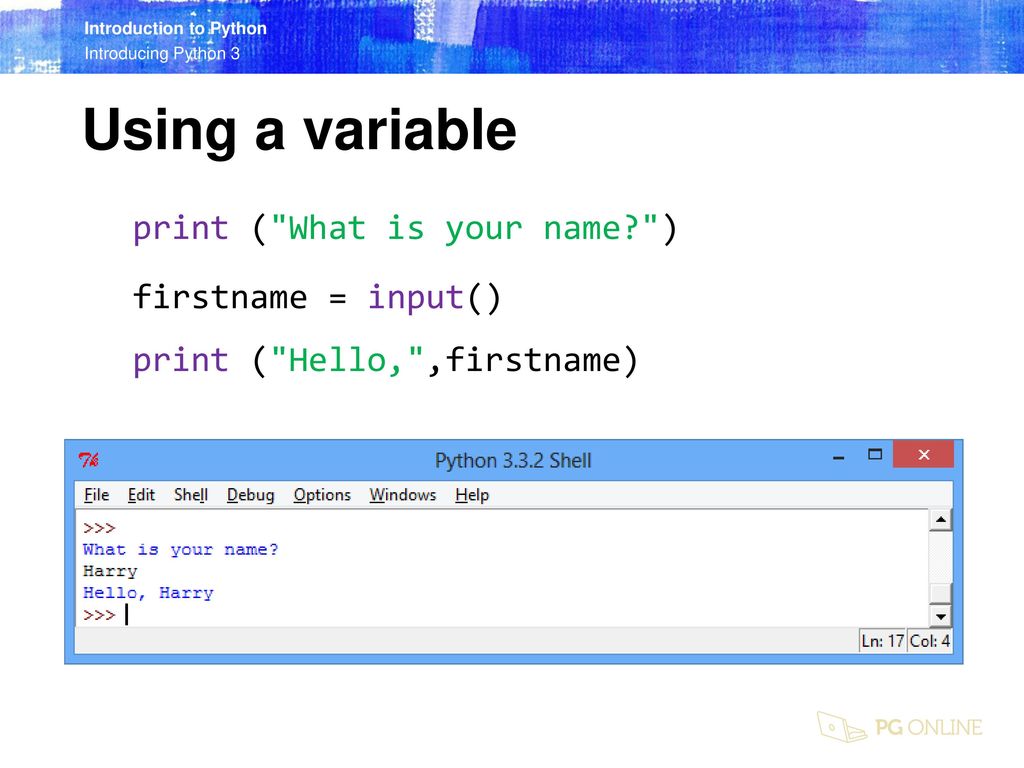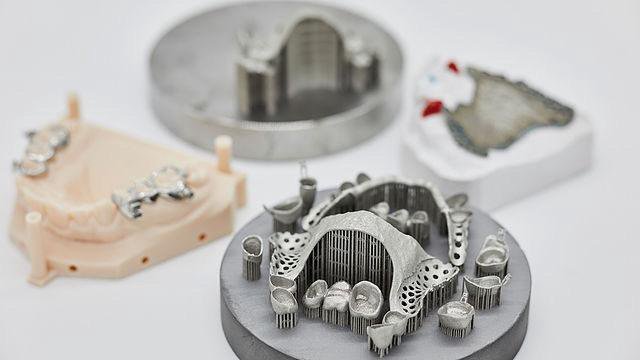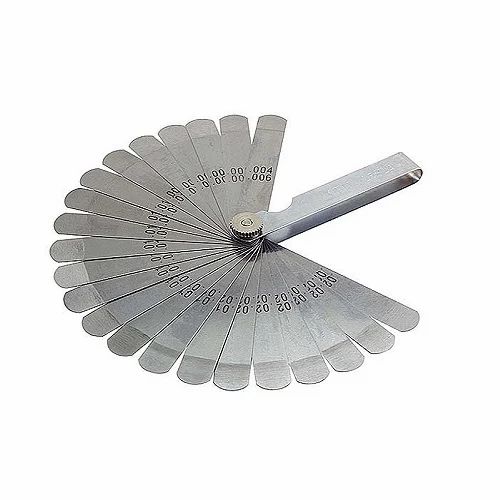3D printed hemp homes
Hempcrete Printed Homes Coming Soon
Hemp has historically been used for a wide range of applications spanning from rope production and textile manufacture, through to more modern day applications such as its usage in hemp-based plastics.
Hemp fibers are very strong, you see, and they are also very cheap.
It has also been used as a construction material named Hempcrete for quite some time (thousands of years in fact), and now Hempcrete is getting the AM treatment thanks to a team of researchers at Texas A&M University.
“No officer, those are my building materials.” (Image credit: Texas A&M University)The researchers, funded by a $3.74 million grant from the Department of Energy, are now planning to 3d print buildings with millenia-old building material. Hempcrete consists of hemp particulate, lime and sand. The project is funded under the HESTIA program which aims to increase the total amount of carbon stored in buildings to create carbon sinks, which absorb more carbon from the atmosphere than released during construction. HESTIA stands for “Harnessing Emissions into Structures Taking Inputs from the Atmosphere” .
Let’s look at the benefits of using Hempcrete over concrete, and also at how those benefits can potentially be enhanced with additive manufacturing.
Material-wise, Hempcrete is a breathable porous material with excellent fire resistance and thermal insulation properties, the latter being beneficial in reducing heating and cooling energy demands. It is significantly lighter than concrete, and a fraction of the compressive strength, so it requires supports to carry vertical loads. You can’t just pour it high and fill it with rebar like cement. In this regard, it is not exactly a direct replacement for cement, more of a material that can be used in-lieu of cement in particular use cases. Use cases where cement would have been overkill.
In terms of other ecological benefits, production and use of Hempcrete has a net carbon-negative environmental effect. This is in stark opposition to the manufacture of traditional cement which is incredibly energy intensive and pretty bad for CO2 emissions also.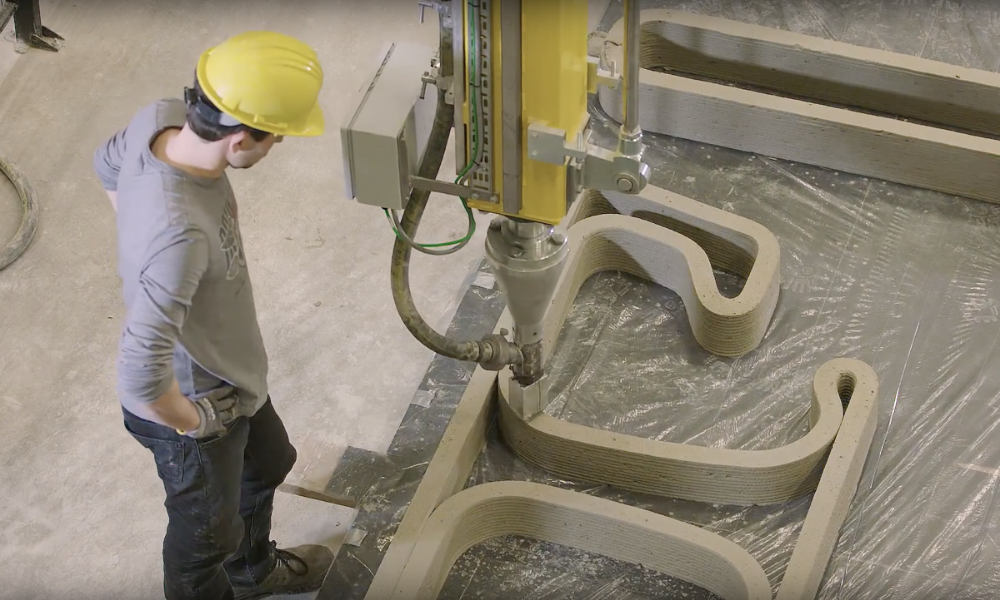
Cement is the source of about 8% of the world’s carbon dioxide emissions, to put that into perspective. Hempcrete is carbon negative because plants absorb CO2 from the atmosphere while growing, so the hemp acts as a carbon sink before the plants are even harvested. That CO2 will remain locked inside the block, and indeed the block will absorb even more carbon through its life.
The buildings have been designed with modern design codes in mind making it more likely to be adopted by the construction industry.
While there have been some forms of Hempcrete around for eons, modern Hempcrete building processes are either cast or spray forming directly on the construction site, or assembling constructions of pre-cut Hempcrete blocks, manufactured off site.
Printing Hempcrete will allow more precise distribution of materials, and can naturally be combined with various topology optimisation techniques to further reduce material usage while maintaining strength, which is required for resilient housing.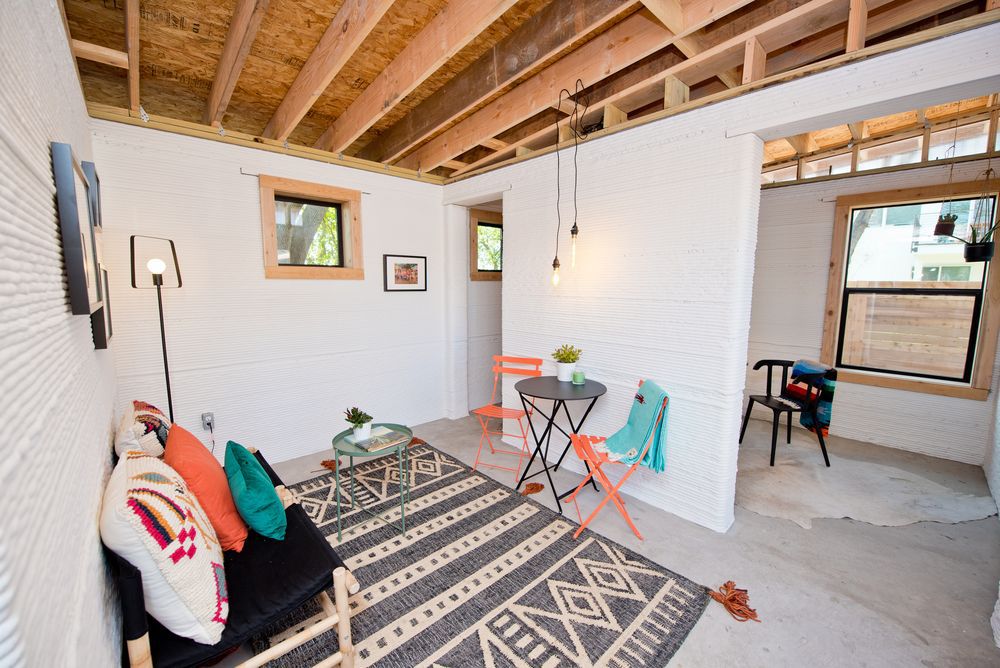 .
.
“The advancements of this project will contribute to the U.S. maintaining its worldwide leadership in advanced construction methods and infrastructure sustainability and resilient technologies,” said Dr. Petros Sideris, assistant professor in the Zachry Department of Civil and Environmental Engineering.
Hemp 3D printed houses - 3Dnatives
Published on January 10, 2019 by Michelle J.
There continues to be implemented more and more green building solutions and 3D printing in construction. These developments appear in various ways and often require an innovative side to come up with something new. There are always a lot to consider when creating new technology and building methods, especially when the solution has to truly be as green as possible and not just claim to be. Mirreco is one such company that has worked on finding greener solutions in the building market, basically seeking to build hemp 3D printed houses.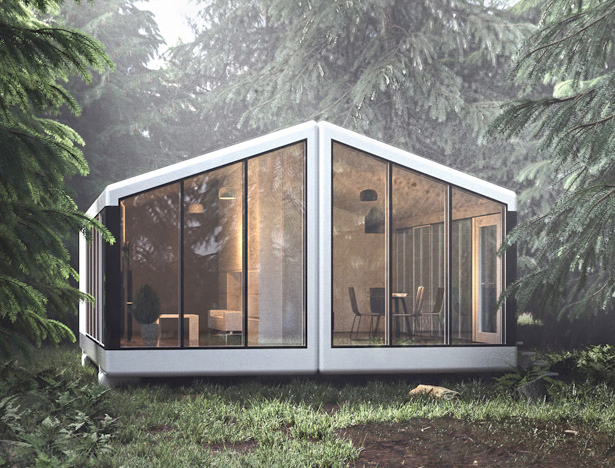 The Australian bio-technology company has dedicated itself to a project with a clear vision: Creating a vertically integrated industry going from the farm to finished house, while producing affordable housing and be environmentally responsible in the process.
The Australian bio-technology company has dedicated itself to a project with a clear vision: Creating a vertically integrated industry going from the farm to finished house, while producing affordable housing and be environmentally responsible in the process.
Some of the tools they have taken in use for this project is 3D printing and the use of hemp. We have previously mentioned hemp in 3D printing filament and the environmental benefits the plant could bring in terms of its overall impact on the environment from growth to production. This is also one of the reasons Mirreco is looking to the plant for their project in combination with 3D technology.
Why focus on Hemp 3D printed houses?
Over recent year more and more countries have or are starting to establish hemp crops on an industrial scale. This both to take advantage of the economic, environmental and social possibilities it brings. Hemp has historically been used for thousands of year. The crop has a variety of uses, and it has more recently been “re-discovered” in the general market.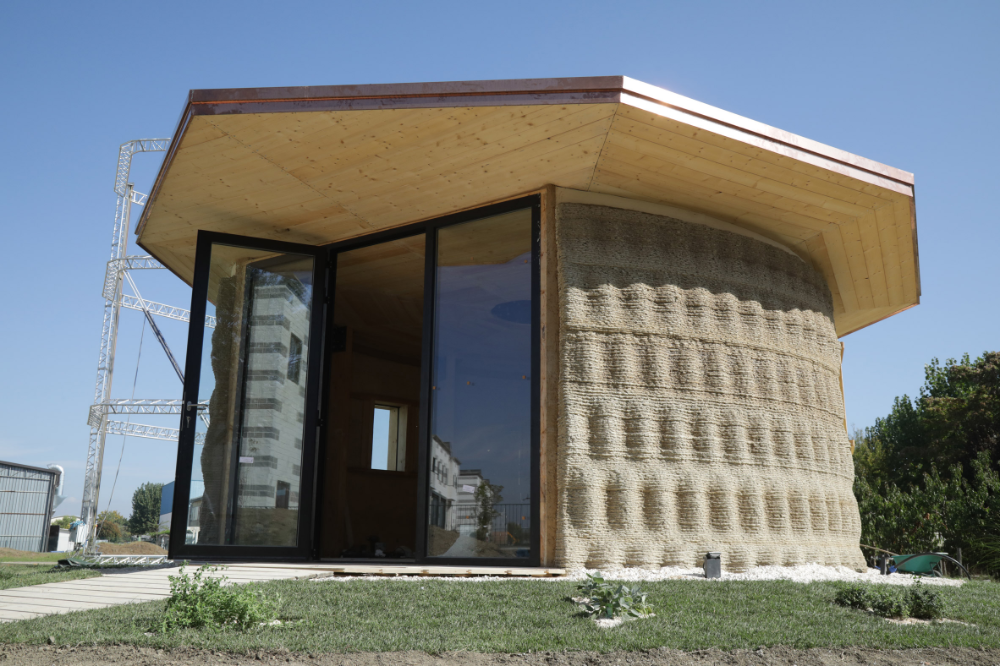 As mentioned one area the versatile material is being used in is 3D printing. Mirreco is contributing to the history by developing their carbon-neutral hemp panels that can be 3D printed into floors, walls and roofs.
As mentioned one area the versatile material is being used in is 3D printing. Mirreco is contributing to the history by developing their carbon-neutral hemp panels that can be 3D printed into floors, walls and roofs.
As Hemp itself has the ability to sequester & store carbon dioxide to cut down on greenhouse gasses. It has also been possible to develop Hemp-based bio composite materials, that have proven stronger & with improved performances over synthetic materials otherwise used in the industry. Along with the rapid growth cycle of the material of 3 crops per year, there is also an increase in demand on the consumer side for more sustainable solutions. Thus making Mirreco’s development of a specialised machine to process an entire hemp plant into separate items, such as seeds, fibres and the hurd, a great tool for this.
Combining 3D printing and Hemp
The company released the concept of their sustainable hemp home designed by the architecture firm Arcforms, based in Perth back in 2018.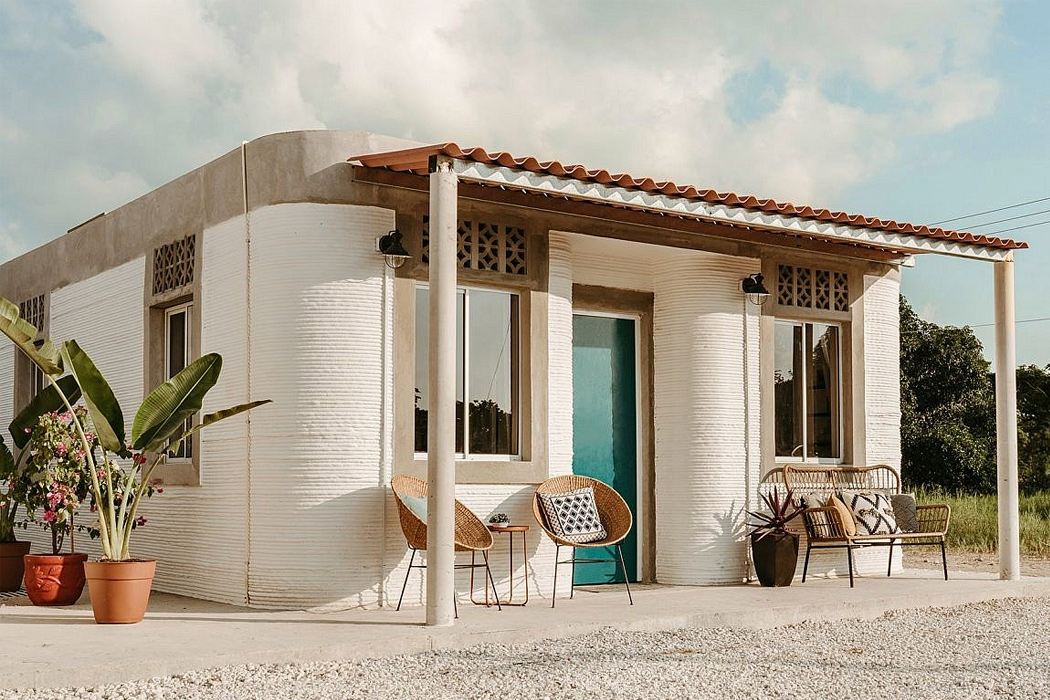 The base of which will be 3D printed with hemp going in as a main material.
The base of which will be 3D printed with hemp going in as a main material.
Mirreco stated: “The floors, walls and roof will all be made using hemp biomass, and the windows will incorporate cutting-edge technology that allows light to pass through glass where it is converted into electricity.” The company’s intentions are; to manufacture, sell and/or own and operate a full fleet of mobile machines to process hemp onsite at relevant farming locations.
The construction will be build using a plus sized printer, such as the recent XXL 3D printer created by S-Squared 3D printers. Which will then layer the material in the wanted shapes, restricted only by structural integrity and the architects imagination. Until the first house have been fully constructed and approved for livability, there will of course continue to be scepticism as we have seen other housing adventures fall through. However for now we will stay optimistic and am looking forward to see the results from the company.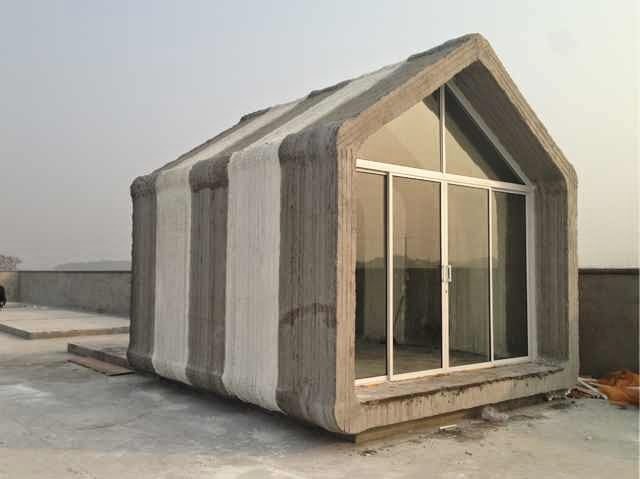.jpg)
What do you think of the Hemp 3D printed houses? Let us know what you think in a comment below or on our Facebook and Twitter pages! Don’t forget to sign up for our free weekly Newsletter, with all the latest news in 3D printing delivered straight to your inbox!
Australians are exploring the possibility of 3D printing hemp houses
News
The Australian company Mirreco is betting on hemp, intending to process the notorious plant into various products, including building materials and consumables for 3D printers.
The company's primary focus is the development of mobile plants for the processing of technical hemp and the automated sorting of fibres, seeds and shives. Each of the components can serve as a raw material for the production of various materials and goods. Bonfires can be used to make paper, sound-absorbing coatings and containers, fibers can be used to make fabrics and bioplastics, and seeds can be used as bird food and raw materials for the production of paints, lubricants and cosmetics.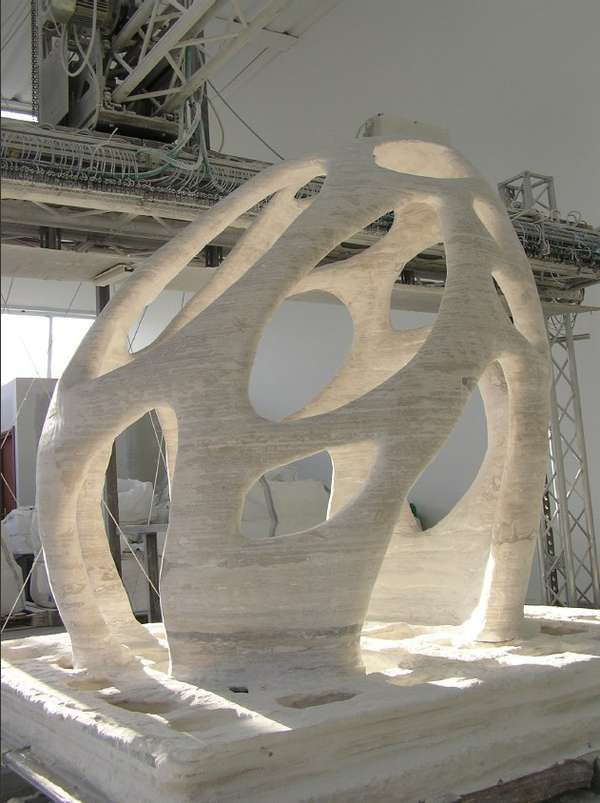 And this is only a small part of the list of possible applications.
And this is only a small part of the list of possible applications.
But there is another area that Mirreco is interested in, namely the construction of hemp houses. Why not, because it is a fast-growing, cheap and environmentally friendly raw material. Plantations of technical hemp effectively absorb carbon dioxide, helping to fight the greenhouse effect, and the stems and leaves ground into biomass can serve as raw materials for the manufacture of panels and as consumables for building 3D printers.
“Hemp panels are durable, easy to manufacture and have excellent thermal insulation properties. Just imagine living and working in 3D printed spaces ready to move in in just a few weeks. The floors, walls and roofs will be made from hemp biomass, and the windows will use advanced technologies to generate electricity from the transmitted light flux,” the developers say.
The company backs up its words with concept drawings of the houses of the future, prepared by the local architectural firm Arcforms.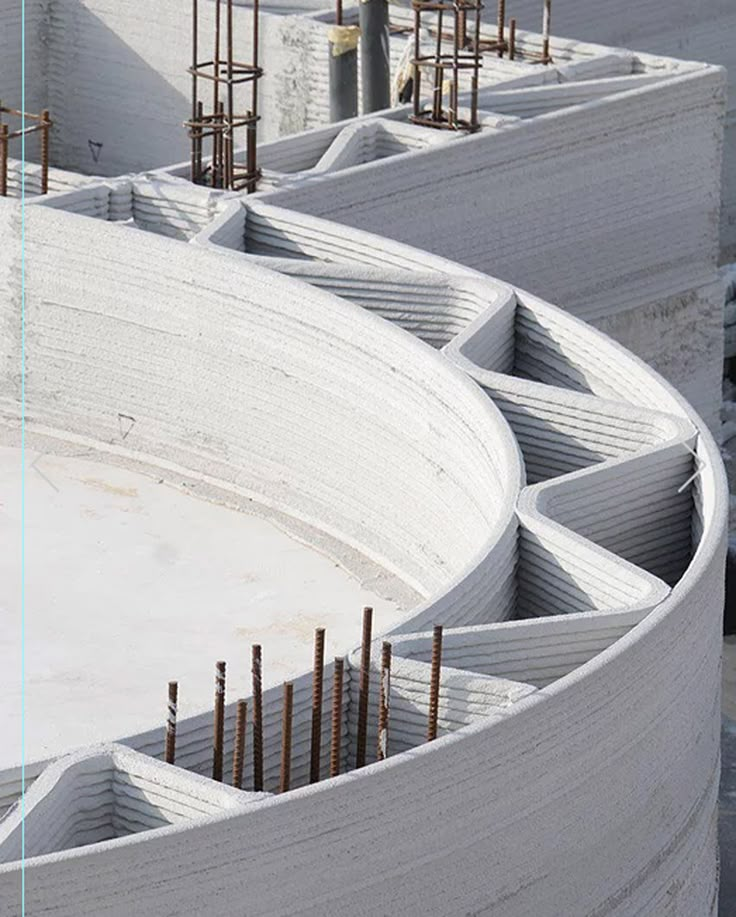 As for windows, we are talking about the development of ClearVue Technologies: in its current form, one square meter of glazing is capable of generating up to 30 watts, but the developers hope to almost double the power. When exactly to expect the appearance of hemp houses is not yet entirely clear. The company says that the development of the processing plant has already been completed and plans to build a fleet of mobile processing stations to operate on remote plantations. In the meantime, Mirreco is looking for additional investment.
As for windows, we are talking about the development of ClearVue Technologies: in its current form, one square meter of glazing is capable of generating up to 30 watts, but the developers hope to almost double the power. When exactly to expect the appearance of hemp houses is not yet entirely clear. The company says that the development of the processing plant has already been completed and plans to build a fleet of mobile processing stations to operate on remote plantations. In the meantime, Mirreco is looking for additional investment.
Do you have interesting news? Share your developments with us, and we will tell the whole world about them! We are waiting for your ideas at [email protected].
Follow author
Follow
Don't want
6
More interesting articles
ten
Subscribe to the author
Subscribe
Don't want
On October 21, the solemn opening of the production site for the production of so-called.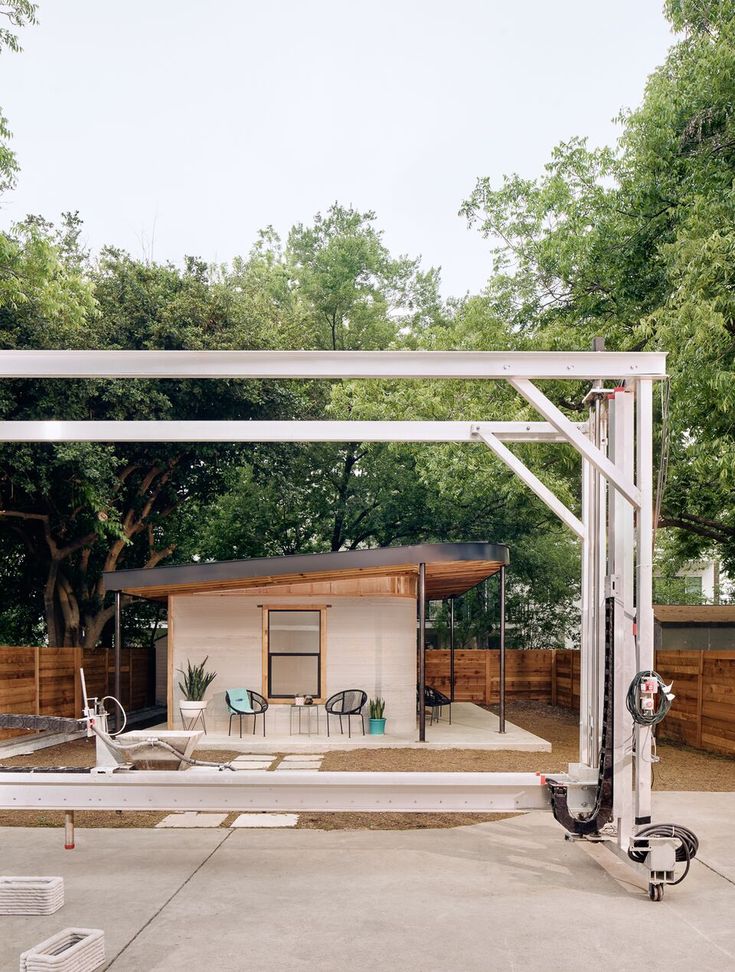 ..
..
Read more
9
Subscribe to the author
Subscribe
Don't want
New hot ends complement the Revo ecosystem offered since the beginning of this year - quick replacement...
Read more
82
Subscribe to the author
Subscribe
Don't want
Collaboration 3D
We are pleased to present you our joint development with Speci...
Read more
7 examples of 3D printed structures from the world's building practice
3D printed houses Endhoven University of Technology (Netherlands)
Recently, 3D printing has been introduced and changed various industries and construction is one of them. This compilation brings together 7 of the most interesting 3D printed housing projects from around the planet.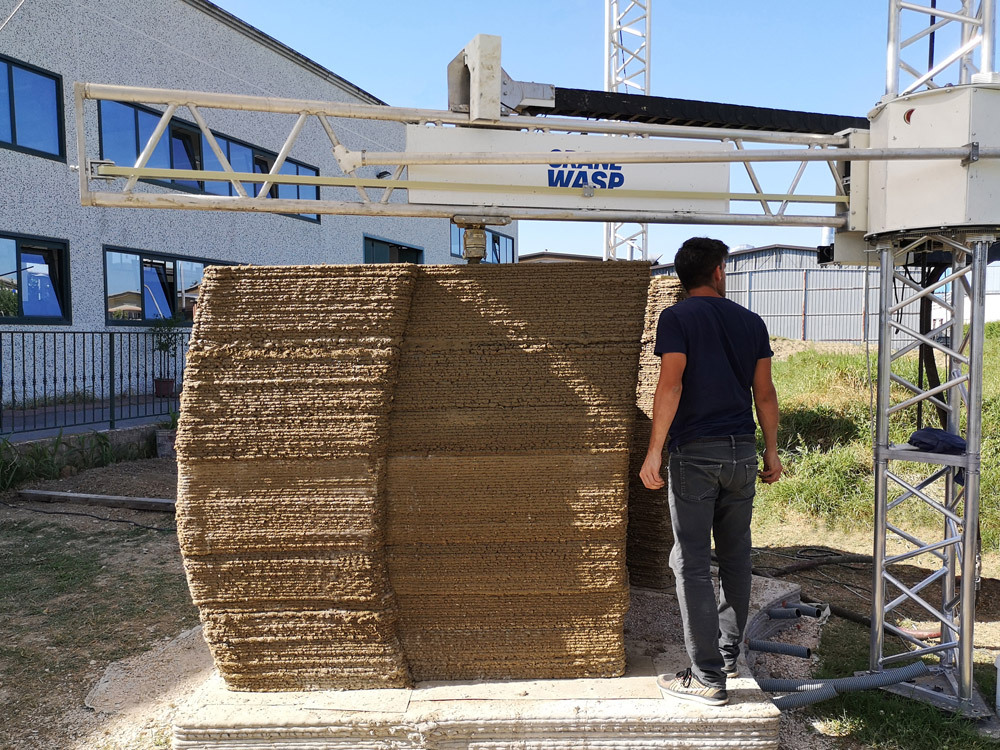 Perhaps after seeing one of you will want to print one of these houses for yourself? Very soon it will cease to be fantasy.
Perhaps after seeing one of you will want to print one of these houses for yourself? Very soon it will cease to be fantasy.
How much does a 3D printed house cost?
A small 2-bed 3D printed house made out of cement will cost $10,000. And later, as the developers hope, the amount will drop to 4 thousand. Larger structures are likely to cost more.
What is the lifespan of "printed" houses?
Since the vast majority of 3D printed houses are made of concrete, they should last a decent amount of time. With proper maintenance and consistent habitation, there is no reason why they would expire faster than traditional concrete structures. Approximately 50-60 years old.
Many 3D printed houses have wooden elements that are more prone to decay over time if not handled or maintained properly. Some buildings have been purposely designed to be biodegradable and are intended for temporary use only, such as for disaster relief.![]()
Are 3D printed houses habitable?
Most of the 3D printed houses created to date are mostly concept buildings, but there are already some projects that aim to produce habitable houses.
So, here are 7 interesting examples of 3D printed structures from the world's construction practice. The list is, of course, not exhaustive.
Mexican houses
In Mexico, a giant 3D printer is being used to build an entirely new neighborhood. Each house is printed there in about 24 hours and in the future a small family can live in it. The 10 meter long printer quickly churns out the outer frame and roof for each of the 152 m2 houses, later installing windows and doors, and finalizing the interior.
According to the architects, this project will help eliminate global homelessness in many countries around the world. The first 50 families from the Mexican city of Tabasco have already moved into the new 3D houses.
Autonomous House PassivDom House
This 3D printed house can work autonomously.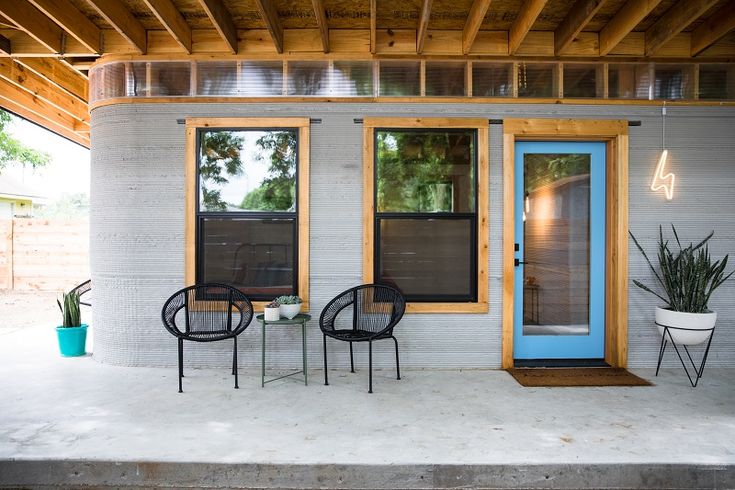 The PassivDom House has been designed to be as independent and energy efficient as possible. PassivDom generates electricity and heat for domestic needs using solar panels on the roof, it can also generate its own water from moisture in the air, the house has 20 times less energy consumption due to various insulation technologies and materials.
The PassivDom House has been designed to be as independent and energy efficient as possible. PassivDom generates electricity and heat for domestic needs using solar panels on the roof, it can also generate its own water from moisture in the air, the house has 20 times less energy consumption due to various insulation technologies and materials.
Italian Biodegradable 3D Printed House
WASP, an Italian company, builds 30 meter high houses with a printed outer shell and internal wooden beams supporting the wooden roof of each unit. The houses are printed using a natural mud mixture made from soil taken from the surrounding area, as well as rice production waste such as chopped straw and rice husks.
And apparently the house is biodegradable.
Something like an alien
Designed by Eindhoven University of Technology (Netherlands), these 3D printed houses look like something from an alien world. Within five years, the creators plan to build five concrete buildings, each of which will fully meet modern comfort requirements and will be rented out in the future.
"This project is the world's first commercial housing project based on 3D concrete printing," the university said. “All houses will be occupied, they will meet all modern requirements for comfort, they will be bought and rented out by a real estate company.”
Local studio Houben & Van Mierlo Architecten is the lead designer for the project known as Project Milestone.
The supply will be made in partnership with the City, contractor Van Wijnen, real estate firm Vesta, material manufacturer Saint Gobain-Weber Beamix and engineering company Witteveen+Bos.
Artwork
Back in 2016, a team of architects from Chicago came up with an amazing design for a 3D printed house made of plastic, carbon fiber panels and glazed walls. Then with this project they deservedly won first prize in the Freeform Home Design Challenge.
Design for 3D printed housing is incredibly bold and, compared to other examples, the most technologically advanced. The buildings have been dubbed the Curve Appeal, and actually look like modern art.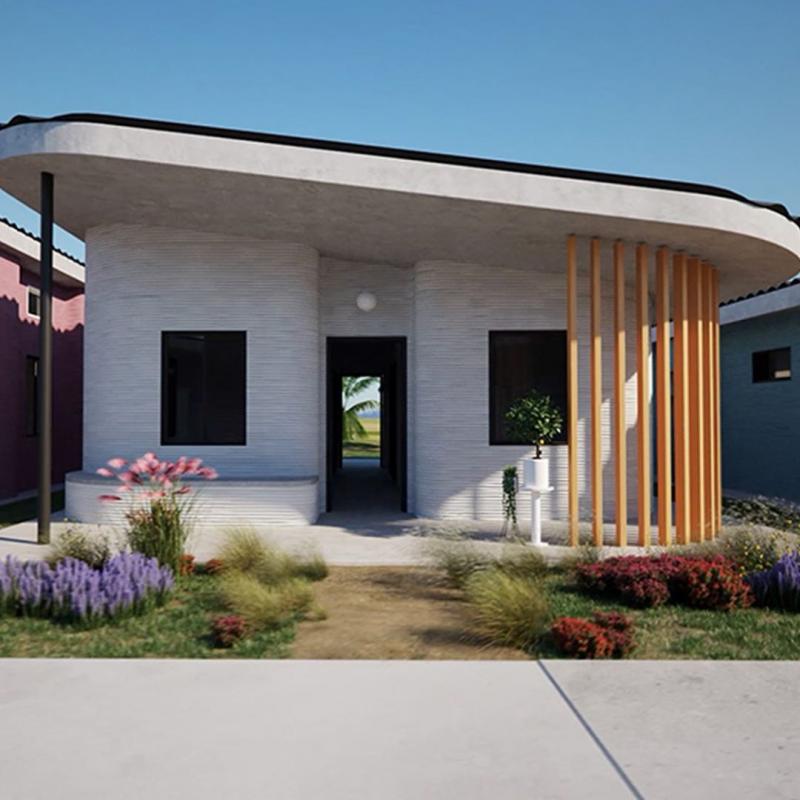
Curve Appeal consists of a curved, arched structure made up of panels that are the outer skin and inner core. Connecting they form a roof and large parts of the facade.
At the beginning of construction, the surfaces will be divided into parts, for optimal 3D printing, and then combined into a single connected structure.
Expandable foam concrete is added to the structure, both for strength and to form a weather barrier. Finally, elements such as glazing and interior trim will be installed.
Microhouse DUS
This microhouse also comes from the Netherlands. DUS architects are planning to build a series of tiny 3D printed houses in Amsterdam. Each 8 m2 cabin is very cozy and has its own bath. The cabin is built using bioplastics, and the project itself aims to demonstrate how additive manufacturing can solve the problem of providing temporary housing for people affected in disaster areas.
When the cabin is no longer needed, it can be destroyed and almost all materials reused.